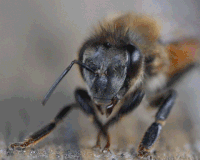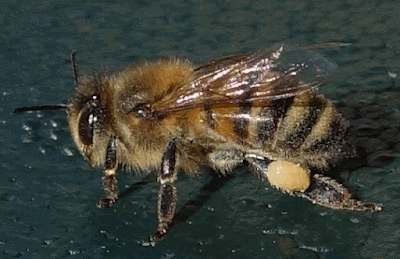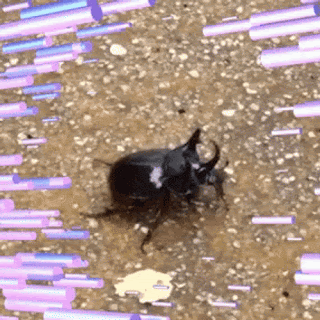Introduction:
In the verdant hills and lush valleys of Northeast India, there exists a hidden gem of nature's bounty – Provespa barthelemyi du Buysson, a species of solitary wasp that offers a myriad of health benefits when consumed. While the idea of consuming wasps may seem unconventional, the people of Northeast India have long revered these creatures for their remarkable medicinal properties and nutritional value. Join us as we embark on a journey through the buzzing world of Provespa barthelemyi du Buysson and uncover its golden goodness.
1. A Precious Discovery: Introduction to Provespa barthelemyi du Buysson
Provespa barthelemyi du Buysson, with its distinctive golden hue and graceful flight, is a marvel of nature's design. Unlike social wasp species, Provespa barthelemyi du Buysson is solitary in nature, nesting in underground burrows and foraging alone. Despite its solitary lifestyle, this humble wasp holds immense significance in the traditional medicine practices of Northeast India, where it is revered for its healing properties and nutritional benefits.
Harvesting Provespa barthelemyi du Buysson is a delicate process that requires skill and precision. Skilled foragers, known as "wasp whisperers," venture into the forests and meadows of Northeast India in search of these elusive creatures. Armed with knowledge passed down through generations, they carefully extract the wasps from their underground burrows, mindful of their importance to the ecosystem. With reverence and gratitude, the wasp whisperers gather Provespa barthelemyi du Buysson, knowing that they hold the key to unlocking nature's golden goodness.
3. Nutritional Treasure: Exploring the Health Benefits
Despite their diminutive size, Provespa barthelemyi du Buysson packs a nutritional punch that rivals that of larger animals. Rich in protein, vitamins, and minerals, these wasps offer a wholesome source of sustenance that nourishes the body from within. Additionally, Provespa barthelemyi du Buysson is high in antioxidants, which help combat oxidative stress and inflammation, promoting overall health and well-being.
4. Medicinal Marvels: Healing Properties of Provespa barthelemyi du Buysson
In addition to its nutritional value, Provespa barthelemyi du Buysson is revered for its medicinal properties in traditional medicine practices. The venom of these wasps is believed to possess anti-inflammatory and analgesic properties, making it effective in alleviating pain and swelling. Moreover, Provespa barthelemyi du Buysson venom is thought to have antimicrobial properties, which may help combat infections and promote wound healing.
Provespa barthelemyi du Buysson holds immense cultural significance in Northeast India, where it is used in various traditional practices and rituals. From offerings to deities to remedies for common ailments, these wasps play a vital role in the cultural fabric of the region. The reverence for Provespa barthelemyi du Buysson reflects the deep connection between humans and nature in Northeast India, where the healing power of the natural world is celebrated and honored. Some health benefits associated with consuming Provespa barthelemyi du Buysson:
Rich in Protein:
High in Essential Nutrients:
Antioxidant Properties:
Medicinal Properties:
Overall, Provespa barthelemyi du Buysson offers a range of health benefits, from providing essential nutrients and antioxidants to potentially possessing medicinal properties that support overall well-being.
As we conclude our exploration of Provespa barthelemyi du Buysson in Northeast India, one thing becomes abundantly clear – these humble wasps are more than just insects; they are nature's golden gift to humanity. From their nutritional value to their medicinal properties and cultural significance, Provespa barthelemyi du Buysson embodies the intricate interplay between humans and the natural world. So, the next time you find yourself in Northeast India, don't hesitate to embrace nature's golden goodness and experience the remarkable health benefits of Provespa barthelemyi du Buysson firsthand.
Why should we consider eating insects (entomophagy)?
Entomophagy offers a sustainable protein source that requires fewer resources such as land, water, and feed compared to traditional livestock. Insects are highly nutritious, rich in protein, healthy fats, vitamins, and minerals. Embracing entomophagy can help address food security and environmental challenges.
Are all insects safe and suitable for consumption?
Not all insects are safe for consumption, as some may carry toxins or pathogens harmful to humans. However, many edible insect species have been identified and consumed safely for centuries across various cultures. It's crucial to source insects from reputable suppliers and ensure they are raised and prepared in hygienic conditions to mitigate any health risks.
How can insects be incorporated into our diets?
Insects can be incorporated into diets in various ways, including as whole insects, ground into flour for baking, or processed into products like protein bars and snacks. They can also be cooked and seasoned to suit different culinary preferences. As awareness of entomophagy grows, innovative recipes and products are emerging, making it easier for individuals to incorporate insects into their diets seamlessly.



.png)






.png)





.png)


.png)



.png)






.png)



